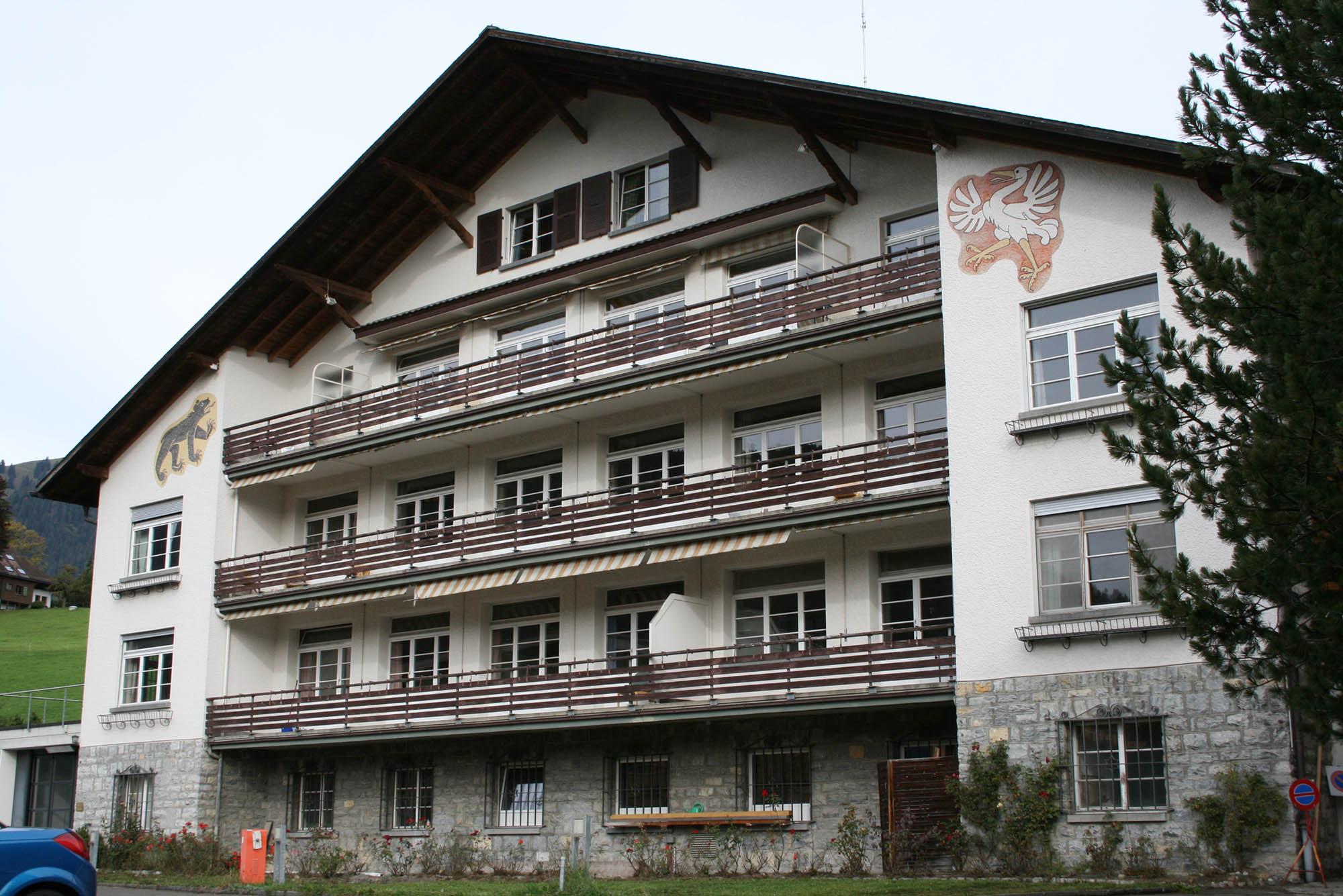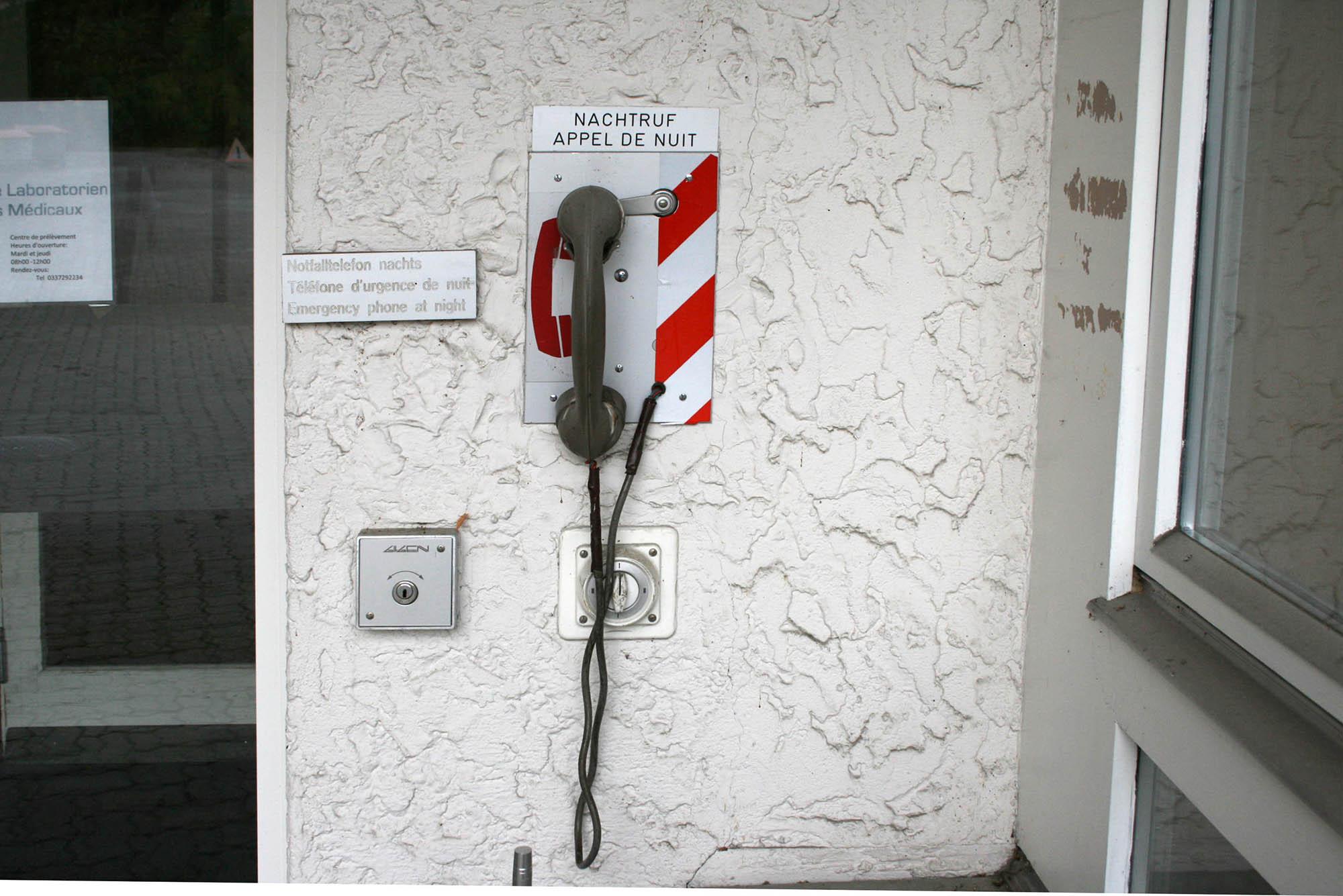Swiss hospitals, too much of a good thing?

It is an open secret that there are too many hospitals in Switzerland but tackling the problem has proved difficult. While the Swiss cling dearly to their local hospitals, regardless of cost, a painful process of consolidation is underway.
For more than a century, patients at Saanen hospital enjoyed an idyllic view of the Bernese Oberland. Some of them could even see their homes from there. The hospital was a fixture in the district and no one could imagine life without it.
But Saanen hospital was closed down two years ago, losing out to a hospital in the neighbouring valley Simmental, after a decade of campaigning and political wrangling. (See related story)
Now the complex of dated-looking buildings on the west side of the village has an abandoned air, the car park lies empty with the green borders untended. Posters taped to the inside of the old entrance doors direct people seeking hospital treatment to Zweisimmen, 17 kilometres away.
The loss of the hospital still rankles; mentioning it provokes strong reactions among regulars at the coffee shop Doris’s Kaffestube in the village centre.

More
Saanen hospital gone but not forgotten
“It is a disgrace to close the hospital in a tourist region like Saanenland, with the resort Gstaad,” one lunchtime customer complained. “It always served the region very well and the deficit was under control. I’ve lived my whole life in Saanenland and it is unbearable that such a thing should happen.”
There are fears that it may be difficult to reach a hospital on time in the event of a medical emergency, especially with the planned closure of the maternity unit in Zweisimmen.
“What use is a hospital in Zweisimmen or Chateau D’Oex to us when something happens, especially in winter when we have so much traffic? You cannot get out of here quickly enough,” an elderly woman said.
Economies of scale
Hospitals account for 44% of all health costs. Some CHF68 billion was spent on healthcare in Switzerland in 2012.
Saanen was one of 65 acute hospitals that closed down or merged between 2002 and 2012, bringing the number of hospitals in Switzerland from 363 down to 298.
“It’s not accurate to view these all as hospital closures,” Nicole Fivaz of the hospitals umbrella organisation H+ told swissinfo.ch. “There have been several mergers and cases of hospitals working together. For example, five former stand-alone hospitals are now run as one entity under Solothurn Hospitals AG,” she said.
Other former hospitals find a new lease of life as primary health care centres. This is the plan for Saanen Hospital.
But despite the consolidation in some cantons, most of the country’s hospitals are still small, a fact which has implications for quality and costs.
“It is important to have a certain size for a hospital for economies of scale – 300 to 400 beds. Switzerland is full of much smaller hospitals. That is one key reason why it is so expensive.” Stefan Felder, health economist at the University of Basel, told swissinfo.ch.
After his retirement in 2009 former health minister Pascal Couchepin famously admitted that a third of Swiss hospitals should be closed to bring health costs under control and the rest should specialise. His comments were echoed by the departing head of the Federal Health Office.
This analysis is rarely heard from serving politicians, especially at the decision-making cantonal level, as it does not go down well with the electorate. In a recent gfs.ch poll, four out of five consumers asked about their preferences for hospital services said they wanted the main specialised treatments to be available “in every region”. Depending on size, a canton may have several regions.
“The people are happy with what we have. They want to have access to medical services nearby,” Fivaz said.
Deadlock
In Basel, there is currently a deadlock between the two cantons – Basel Country and Basel City – over which of the cantons’ two largest hospitals should be shut down. Both agree that there are too many hospitals serving the local population but neither wants to shut one of their own.
Basel Country’s head of government Isaac Reber told Swiss public radio, SRF: “We know we have one too many hospitals in the region”. Insurance premiums, which vary according to canton of residence, are set to increase next year all over Switzerland but the highest increase will be seen in the Basel cantons.
Even the CEO of Basel Country cantonal hospital at Bruderholz has admitted there is an oversupply of hospitals in the region. Nevertheless he announced in September plans to expand.
“If there is overcapacity and no real need for the existence of a hospital then funds shouldn’t be poured into that,” Paul Rhyn, of the medical insurer’s association Santésuisse, told swissinfo.ch.
“It’s a political question. Several hospitals we know are below the rate of quality or cost-effectiveness. If we could redesign the landscape of hospitals today it would be totally different but a clean sheet approach is not possible with all the political restrictions and the expectations of the public,” Rhyn added.
List system
The cantons are responsible for their own health budget and draw up the lists of hospitals to be included in the compulsory insurance system.
Felder describes the system as “like a cartel”. “Every canton has a list of hospitals and once a hospital is on that list it can treat patients and send the bills to the insurers who are legally obliged to pay up.”
“Insurers are not free to pick partner hospitals. If the insured public could be rewarded for going to certain hospitals we would have a very different system,” the economist said.
Some cantons, like Bern, are rethinking their hospital landscape and moving towards specialisation, but where the catchment area of a hospital theoretically extends across cantonal borders, planning is harder to accomplish.
This is where the conference of cantonal health directors comes in. Contacted by swissinfo.ch, the grouping laid the blame for increasing hospital costs on progress in medical therapy and diagnostics, and the demographically-based increase in elderly and chronically ill patients.
It claimed no amount of rationalisation or reform could compensate for this reality.
“There are various consolidation efforts already in place, under the auspices of the conference of cantonal health directors. These are not specifically aimed at hospital density but based on instruments of performance-related hospital planning,” the conference said in a written response to questions.
The conference cited three examples of joint recommendations issued by the conference and an cross-cantonal agreement on highly specialised medicine.
“It is imaginable that more hospital locations will be given up, less as a political act than as the result of business-based decisions on the part of the hospitals,” it added.
As the story of Saanen shows, this will not happen without resistance on the ground. Saanen was just the kind of hospital that “should” be closed – close to other hospitals, running at a loss, under-occupied and too small for economies of scale and guarantee of expertise. But that doesn’t make it any easier to bear.
Safety in numbers
Many Swiss hospitals do not require the minimum necessary number of operations to ensure quality and safety, experts claim. One example is the removal of the pancreas, a major operation that is undertaken following the detection of cancer or serious infection. Some 740 such operations were carried out in more than 50 Swiss hospitals in 2010. This surgery can be life-threatening and entail grave post-operative complications. Therefore it should be done in a centre where at least 20 to 30 operations are carried out annually.
Yet in 2010, according to the Federal Health Office which compiles comprehensive figures on surgical procedures, 38 pancreatic removals were carried out in Swiss hospitals which saw fewer than 10 cases per year. A further 20 operations took place in hospitals that hosted fewer than 20 such procedures.
Analysis: Santésuisse

In compliance with the JTI standards
More: SWI swissinfo.ch certified by the Journalism Trust Initiative













You can find an overview of ongoing debates with our journalists here . Please join us!
If you want to start a conversation about a topic raised in this article or want to report factual errors, email us at english@swissinfo.ch.